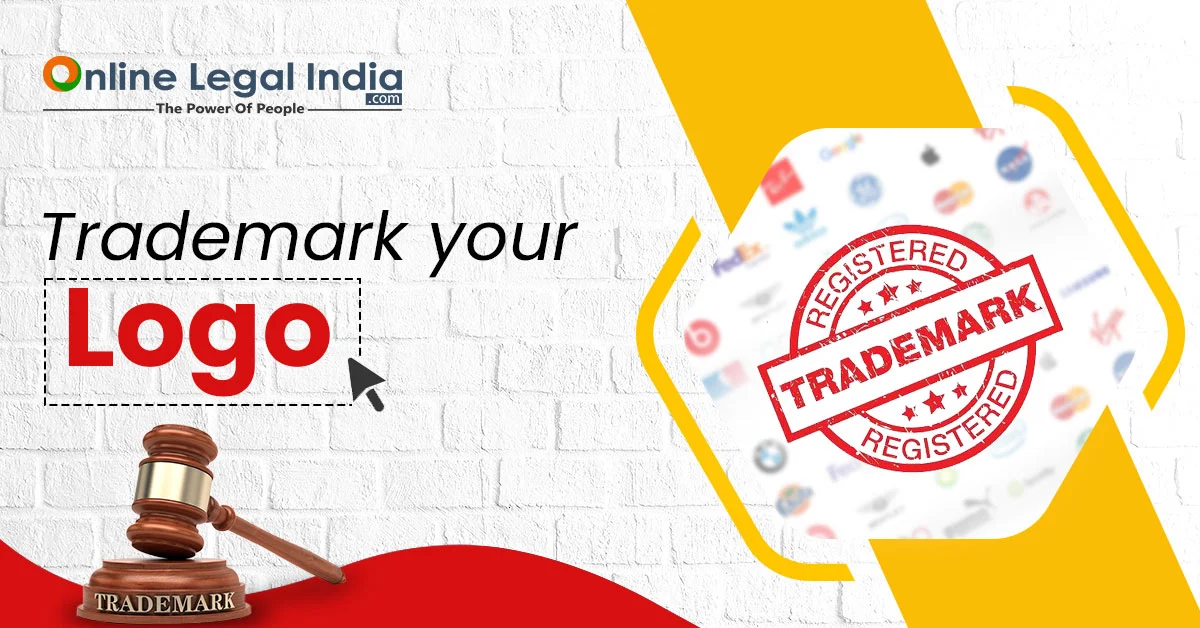GSTR 9C – Applicability, Due Date, Turnover Limit
18 Jul, 2025

 By Online Legal India
Published On 30 Apr 2024
Updated On 24 Feb 2025
Category Trademark
By Online Legal India
Published On 30 Apr 2024
Updated On 24 Feb 2025
Category Trademark
Any name, emblem, logo, image, phrase, expression, etc. that a business uses to represent its goods or services is eligible for trademark registration. The use of a trademark helps a business to differentiate its goods from those of competitors in the market and gives customers a way to recognize the goods or services from the mark. A trademark registration appeal is made in India, and if successful, the trademark is given protected status for a predetermined amount of time. If you trademark your logo then, it protects your logo from getting infringed.
If you don’t want to trademark your logo, then it’s completely upon you. But if you don’t trademark your logo then your brand can be infringed by your competitors. It is very important to trademark your logo. Your brand is valued around a million dollars and to safeguard or to protect your brand it is always advisable to trademark your logo. It protects your brand, from being infringed by your competitors. Read more
Let’s elaborate this in a new way with examples:
Suppose you are running a food restaurant and it is running well. Your brand also earned some name in the market and you have a good amount of traffic. Now another person is coming up with a similar food restaurant and using your logo to grow their business and attract traffic from your logo.
How will you feel?
You will not be happy right? Here the trademark plays the role. In the same situation if your logo is trademarked then you could have gone to take legal action against their brand, but if you don't have your logo trademarked then you can't do anything. You will lose your brand value.
Let’s look at the types of Trademark registration, in simple words:
Trademark Registration plays a vital role in identifying the origin and kind of business a brand is operating with. Let’s go through the types of Trademarks available in India:
Let’s look at the documents which are required for registering a trademark logo:
In this step, we will look into the documents that are required for registering a trademark, and the documents that you will have to furnish while registering the trademark:
Process of Registering a Trademark in India:
Now, let's look at the process of Trademark registration, in this process many factors are included, like starting from a Trademark search to getting a Trademark certificate and every process has a different role. We will go through each of the points of trademark registration in brief.
First, an entity needs to decide under which class they are going to register their trademark and accordingly, they have to categorise that under the NICE classification System. There are a total of 45 classes of goods and services are mentioned.
Second, the entity which is going to register the trademark has to do research regarding the mark they are searching for, is available in the market or not.
The application for Trademark registration is submitted online to the respective intellectual property office, requesting examination and approval of the mark.
The Entity or the brand going for Trademark registration have to pay a certain amount of fees to the respective authority, and the fees vary from entity to entity.
The international system known as the Vienna Classification, or Vienna Codification, is used to classify the figurative components of trademarks. The brand Registrar will apply the Vienna classification to the figurative features of the brand following the submission of the trademark registration application.
This stage includes a review of the trademark by the respective intellectual property Authority to examine its uniqueness and availability. The main objective is to ensure that the mark meets the criteria for distinctiveness, non-descriptiveness, and compliance with other legal formalities. A Trademark Registrar's officer will be tasked with handling the trademark registration application once the Vienna Codification is finished. The officer will create a trademark examination report and evaluate the application for accuracy. The officer may approve the application, permit trademark journal publication, or object to the registration procedure based on the information in this report.
If there are objections, the applicant may confront the Trademark Officer with the issues. The trademark will be authorized for publication in the Trademark Journal if the officer deems the justifications enough.
Further, the Trademark will be produced for publication and it will be published in the trademark Journal, which is a publicly accessible document. The trademark will appear in the Trademark Journal following acceptance of the application by the Trademark Registrar. Every week, this journal is released with information on every trademark that the Registrar receives. If the public feels that the trademark registration could be detrimental to their interests, they have the right to oppose it. Within ninety days of publication, if no objections are filed, the trademark will be registered in twelve weeks.
You can get a trademark objection notice if the trademark examiner has concerns about your application. Our professionals can help you prepare a strong response and provide the required paperwork and proof.
We assist you in navigating any oppositions or hearings and keep you updated on the progress of your application. Online Legal India can assist with trademark assignment, renewal, and licensing as well as any other post-registration services you might need after your trademark has been successfully registered.
Are you prepared to register your trademark and safeguard your brand in India? Registering a trademark with Online Legal India is the first step toward protecting your company's identity. You can be confident that your brand is in good hands when you work with Online Legal India. Don't wait any longer; make sure your trademark is legitimate and unique right now. Start using Online Legal India to protect your important intellectual property rights.
Objections raised during the examination stage are extremely important to make progress in the trademark registration process further. The applicant must respond to the objections within 30 days from the date from which the objection has been raised.
If a third party objects to the application, a hearing will be scheduled by a Trademark Hearing Officer. There is an opportunity for both the applicant and the opposition to present their cases. The Trademark Hearing Officer will determine whether to approve or deny the application based on the hearings and supporting documentation.
Lastly, if the concerned authority of the trademark registry thinks that the proposed trademark has passed all the said criteria, then they will issue the company or the entity with the Trademark Certificate, from that very time you can start using the Trademark logo with your Company logo or name or anything that you have trademarked.
After going through all these procedures, one question can strike into your mind. I have trademarked my logo-thus all my duties and responsibilities are over. No, all the responsibilities are not over and you have now more things to keep an eye on.
Now, you have to renew your trademark from time to time- to keep the trademark running so that the validity of the said trademark doesn't expire. Now we will look into what is Trademark renewal.
What is Trademark Renewal?
MSME / Startup/ Individual Application:
Company as Applicant:
The government charges INR 9,000 for the electronic registration of a single-class trademark while INR 10,000 is required to physically complete a single-class application.
If the trademark holder does not react to or update the letter from the Trademark Registrar's Office within the specified timeframe, the mark will be withdrawn from the Trademark Journal.
What is the Procedure of Trademark Renewal in India?
In India, the trademark renewal procedure can be carried out in one of two ways:
Know about the renewal process in detail:
Conclusion: Even while it can seem straightforward, many business owners often neglect to trademark your logo. To maintain the protection of your logo, companies must make sure that all of their trademarks are properly registered. You may easily retain your brand identification by working with Online Legal India. Our legal professionals will take care of your renewal process and alert you to the upcoming deadlines. The experts of Online Legal India have catered to a lot of clients till now, and most of the clients are happy with the services they get from Online Legal India. It’s high time that you trademark your logo through Online Legal India and protect it from being infringed.